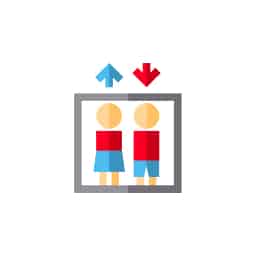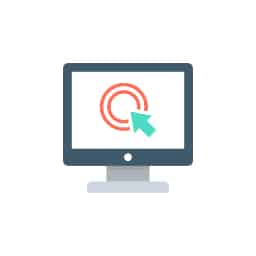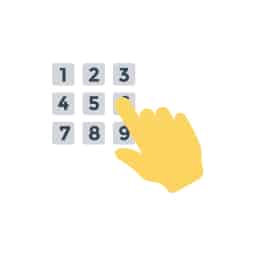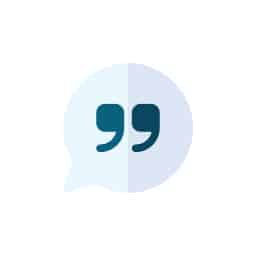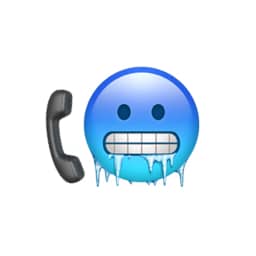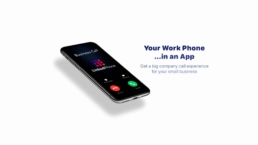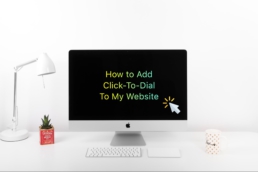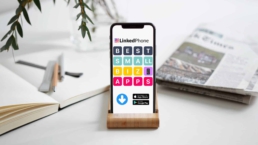How to Create a Stellar Meeting Invite Template (With Examples)
Table of Contents
8 Tips for Writing the Perfect Meeting Invite Template:
- Start with a brief subject line
- Give a personalized, friendly greeting
- Communicate the date and time
- Specify the location
- State the purpose clearly
- Share the agenda and expectations for the meeting
- Request that participants RSVP
- Close with a professional signature
Meetings are a common target of ridicule in the modern zeitgeist, with no shortage of memes giving props to those who have survived a meeting that could’ve been an email. Author and columnist Dave Barry jokes, “If you had to identify in one word the reason why the human race has not achieved and never will achieve its full potential, that word would be ‘meetings.’” All joking aside, meetings are not only essential but can be productive and efficient if you start from the beginning with an outstanding meeting invite template.
The consequences of ineffecient meetings are plentiful: unproductive time management which leads to wasted money, confusion arising from unclear actions, loss of focus, and participant frustration to name a few. In a survey conducted by The Muse, executives said they considered 67% of meetings to be failures.
So what’s the secret to holding efficient meetings? The recipe starts even before the meeting with a well-planned meeting invitation that covers all the bases and invites participants to come prepared for efficient collaboration. Read on to learn how to create a stellar meeting invite template, including meeting request templates for virtual meeting platforms, group and one-on-one meetings.
LinkedPhone serves the small business community with local & toll-free business numbers that work with your cell phone, desk phone, & laptop. Add a 2nd phone number to your cell phone with our mobile app. Talk & text with clients on the go. Add team members too. Finally break free from the desk phone. At LinkedPhone, freedom rings! 🔔📱💻☎️

Why Sending the Right Meeting Invitation Matters
Conducting an efficient meeting begins long before the meeting starts, at the very first steps – the invitation. Sending the right meeting invitation is important for many reasons, but there are three broad themes which thorough meeting prep should address:
1. Efficiency
A well-prepared meeting invite will efficiently communicate all necessary details of the meeting – the date, time, purpose and agenda – allowing you to lead the process from the start with clarity and efficiency.
2. Preparation
When a meeting invitation includes clear information regarding the roles and responsibilities of participants, they are more likely to come prepared with all the tools, ideas, and resources needed to tackle the issue at hand.
3. Accountability
When recipients accept a meeting invitation, they are obliged to attend and are more likely to show up. One of the leading factors leading to inefficient meetings is poor attendance.
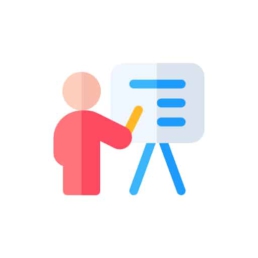
Tips on Writing a Great Meeting Invite Email
There are a few key strategies to keep in mind when inviting your colleagues to a meeting. We’ll get into some more detailed techniques and templates below, but remembering these four tips will help get your point across:
Mind Your Subject Line
The subject line is your first impression and an often overlooked, yet important, aspect of a meeting invitation email. Begin with a clear and concise subject line that condenses the meeting’s purpose into just a few words. A subject line is more likely to stand out if it is below the average length, so shoot for a subject line with under 60 characters or nine words. It may also be a good idea to consider using current trending sales buzzwords and business jargon to help you compete for attention in the inboxes of your invitees.
Short, Sweet and to the Point
These days we all have limited time, and people want to get to the point as quick as they can. Show your invitees that you respect their time, and keep your email brief. Cover the basics and leave any superfluous information out of the email.
Tone Matches the Purpose
The tone of your email is important and should read differently depending on your audience. For example, an email invitation to a business meeting for shareholders should be phrased in a more formal manner than an email invitation to a monthly staff meeting. Consider your recipients and prepare your email accordingly.
Personalization
If possible, the greeting should begin with the recipient’s name, and the added touch of a friendly opener is always a good idea. This could be something like: “I appreciate all the work you’ve done on this project” or “I hope the week is treating you well.”
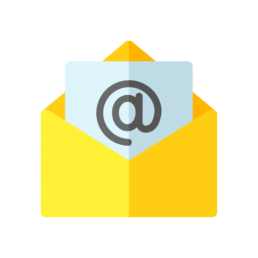
How to Send a Meeting Invite
We will provide you with a few handy templates for common types of emails, but first let’s get down to the basics of how to structure a meeting invite email. The following list covers all the essentials, then we’ll dive into more specifics about each item below:
-
- Start with a brief subject line
- Give a personalized, friendly greeting
- Communicate the date and time
- Specify the location
- State the purpose clearly
- Share the agenda and expectations for the meeting
- Request that participants RSVP
- Close with a professional signature
1. Start with a brief subject line
The subject line is your first impression and one of the most important aspects of an invitation email for a meeting, so don’t let it be just a quick afterthought. Your subject line should condense the purpose of the meeting into just a few words. It should be succinct, clear and compelling. Shorter subject lines and calls to action are great tactics to encourage quick replies.
2. Give a personalized, friendly greeting
A friendly greeting with a personal touch is a great way to ensure your meeting invitation doesn’t get lost in the recipient’s inbox. This section should not take up too much space, as you want to be mindful of everyone’s time, but a warm greeting that is tailor made to your audience will go a long way towards compelling a response from invitees.
3. Communicate the date and time
How many times have you gotten a meeting invite with a missing or incorrect date and time? When mistakes like this happen, the meeting begins to feel cumbersome and inefficient before it has even begun. Double check your date and time, always. Including an end time is also a good idea to make sure there are no surprises when the meeting lasts two hours instead of one.
If the date and time are not yet firmly set, but you are attempting to find when participants are able to meet, be sure to offer specific possible times for the participants to choose, rather than leaving it open ended. Consider using a scheduling or polling app if you need to find a time that works for several people. Note the time zone along with your meeting date to avoid any confusion – especially if the meeting is virtual – and be aware of where your participants are located so you can choose an appropriate time for all so you aren’t scheduling a meeting before the crack of dawn on the west coast, or after evening on the east coast.
4. Specify the location
Clearly specify the location of the event, including directions if necessary, or instructions for attending virtually if applicable. If using virtual meeting platforms, be sure to clarify which platform you are using and give detailed instructions on how to join including any applicable links and passwords. If possible, it is best to avoid apps that participants will have to download.
5. State the purpose clearly
The purpose of the meeting is one of the factors that will compel participants to quickly respond to a meeting invite and to show up ready for collaboration. A meeting without a purpose is a surefire recipe for failure. Focusing your purpose will tell participants what they can expect and help them to prepare. Meeting without a clear purpose can lead to wasted time and frustrated participants. Though it needs to be clear, you do not need to share details. Keep it clear and informative but concise and leave the details for the actual meeting.
6. Share the agenda and expectations for the meeting
Sharing a meeting agenda lets your participants know what to expect, what is expected of them, and that you are showing up to the meeting prepared – encouraging them to do the same. An effective agenda will increase productivity at the meeting, establish necessary steps before and during the meeting, and ensure everyone is on the same page.
An agenda can be geared toward the specific needs of your meeting and organization, and can be simple or detailed, casual or formal. An agenda that includes not only the main talking points but time allotted for each will help keep everyone on task during the meeting.
7. Request that participants RSVP
Knowing how many people to expect is essential to conducting an effective meeting. Without an RSVP, you risk low attendance and a less productive meeting. The best way to get an accurate headcount is to request that participants RSVP. It is best to ask participants to respond by a specific deadline so you have plenty of time to switch things up if there is likely to be low attendance for the planned date.
8. Close with a professional signature
One of the cardinal rules of business etiquette is that communicating in a professional manner is a must. Don’t forget to end your message with a warm closing and your full name or professional branding. A warm closing compels action on the part of the invitee, and a formal signature or professional branding adds weight to your message.

Meeting Invite Sample Templates You Can Use
We’ve put together a list of a few of the most common types of invites that get used in a business setting, and prepared a few templates that you can use in your own business. Feel free to copy and adapt any of these when inviting colleagues to meetings:
Formal Group Meeting
An invitation email template for a formal group meeting should be professional, courteous and concise. With group meetings it is best to request an RSVP and kindly ask that participants do so by a specific date. If you have already mastered how to write a professional email, you are well on your way:
Greetings [name of group],
I hope this email finds you well. I’m writing to cordially invite you to a meeting to discuss [topic] and [topic]. The meeting will take place at/on [location or virtual meeting platform] on [date] from [begin time] to [end time]. Please review the attached agenda.
Kindly click this link to confirm your attendance no later than [date] so we can plan accordingly.
Warm regards,
[Your name and professional branding]
One-on-one Meeting
A meeting between individuals is going to require a different approach to your meeting invitation template. One on one meeting invites should include more personalization than formal or group invites:
Hi [name of participant],
How is your week going? I am looking forward to further discussing [subject] with you and hearing your ideas and any questions you may have. As you know, we will be discussing [topic] with the goal of deciding [topic]. I am hoping to schedule the meeting at [location or virtual meeting platform] on [date] at [time]. Does that work for you? If not, please respond with a few times that week that fit your schedule.
Before the meeting, please review the agenda and make sure you [action item]. Send me an email with any questions or concerns.
Very best wishes,
[Your name]
Zoom/Teams/Outlook Meeting
An invite email template for a remote meeting is going to look a bit different, whether it’s a Teams meeting invite, a Zoom meeting invite, or an Outlook meeting invite template. If using Zoom, you can customize meeting email templates on the virtual meeting platform itself:
Dear [attendee name or group],
I hope you are doing well. You’re invited to an important meeting I am hosting to discuss [subject]. The meeting will be held remotely via Zoom on [date] from [time] to [time] – please click the link below to join.
[insert link]
Feel free to contact me with any questions or concerns you have before then. I appreciate you and hope to see you soon.
Cheers,
[your name]
Recurring Meeting
Recurring meetings are excellent candidates for templates as your basic details may not change much from one meeting to the next. It is always a good idea, however, to mix up the greeting to keep things interesting:
Hello there team!
Yes, it’s that time again – our monthly meeting is approaching and will be held on [date] from [begin time] to [end time]. We will be reviewing our previous month and discussing [topic] and [topic]. Please review the attached agenda, message me directly with any additions or corrections, and RSVP via the link by [date].
See you soon!
Best,
[Your name]
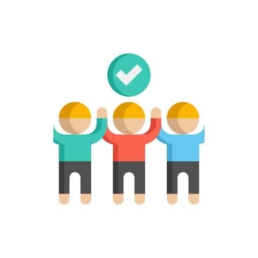
Set Every Meeting up for Success with the Best Meeting Invite Templates
As meetings have become a regular and necessary part of our lives, mastering the art of the meeting invitation is an important tool in your toolbox. Using these examples, best practices and templates will set you on your way to creating stellar meeting invitations that inspire action, lead to more successful meetings, and help grow your business.
Sign up for a 7-day free trial of LinkedPhone today, and find more ways to bring efficiency to your small business meetings and communications!
Business Growth Toolkit
Get the latest thought leadership insights on growing your business plus occasional LinkedPhone updates. We respect your inbox!
Small Business Resources
A special high five to Faith Dickens for her outstanding research and contributions to this article. We love working with and supporting like-minded entrepreneurs. Thank you Faith! ❤️
Get In Touch
We would love to hear from you.
Please contact us at any time with questions or feedback.







